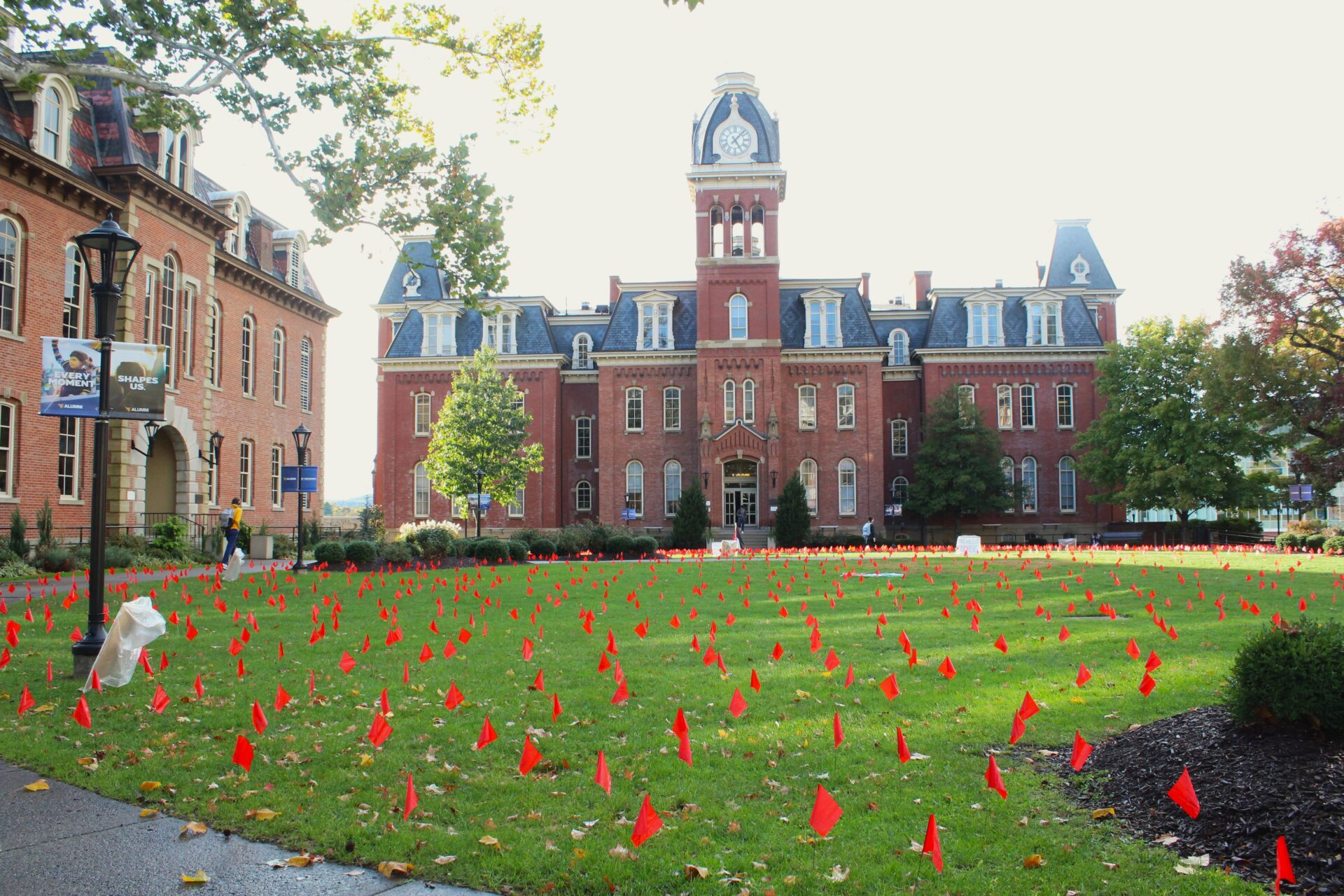October 7 marked one year since the start of one of the deadliest conflicts in the modern history of the Middle East. Students at West Virginia University are commemorating a grim year with a display on campus.
Two thousand red flags were arrayed in the ground leading up to West Virginia University’s Woodburn Hall Tuesday evening.
Each flag represents 100 people who died, and the flags together are meant to show the 200,000 total deaths since the start of the Israel-Hamas War that has now spilled over into Lebanon and Syria.
The flags, along with informative posters, were placed by the West Virginia Coalition for Justice in Palestine.
Omar Ibraheem is one of the student organizers who set the flags in front of one the university’s most iconic buildings.
“This field is full, and that’s only 2,000,” he said. “200,000 is just an unimaginable number that, when you think about it, all you hear is numbers.”
Ibraheem said visual displays like the flags outside Woodburn Hall make things more understandable.
“This is to put that into reality and to show people that, hey, these are real lives. Each and every individual was breathing,” he said. “They had a future. They had an education. Most of them were kids, which is the unfortunate thing.”
The official death toll in Gaza currently stands just above 40,000. But an analysis published in the medical journal The Lancet over the summer estimated the real death toll could be closer to 186,000. That is the number Ibraheem and his fellow students have used as the basis for the display. Ibraheem said the number is likely higher now, months after the publication.
“I don’t know how you could really put in your head that all of these flags are 100 lives lost, and you don’t feel something,” Ibraheem said. “At the end of the day, I just want people to really understand that these numbers are people. They’re not just numbers. And I want people to start critically thinking about everything, critically thinking about what our government is doing, what Israel is doing, and what effects these have on actual lives, people that are like me and you, people that are mostly children. That’s what I want out of this.”
Ibraheem says due to a university rule requiring such displays be taken down by 9 p.m. each day, the flags will move around campus throughout the week.
“The whole point is not to upset people. It’s to follow the rules and make an impact, and that’s it,” he said. “We actually took that cleaning up, setting up, to our advantage, and we’re going to be moving around campus.”
Chris Schulz/West Virginia Public Broadcasting
Wednesday morning, the flag display is set up by the main walking path between the WVU Health Sciences building and the main parking garage and PRT station. Thomas Smith brought a friend to WVU’s medical campus for a procedure and discovered the display while waiting. He was at a loss for words, but said the toll the display represents is crazy.
“I just think everybody needs to start getting along together,” Smith said. “I mean, it’s ridiculous how people want to judge somebody by their color or their religion and all that. It’s just ridiculous. You need to get to know people better, and then go from that.”
Tony DeMino is a vendor who was making a delivery to WVU when he stopped to look at the display. He said what the flags represent is a shame.
“All of this is ridiculous. You shouldn’t be killing Jews. They shouldn’t be killing Palestinians,” DeMino said. “This is all so unnecessary, but it was started by the Palestinians. I mean, that’s a fact.”
Ibraheem said that perspective fails to see the historical context of the current conflict.
“People like to say it started Oct. 7,” he said. “Well, why don’t you look at the past 57 or even 75 years of Israel’s torment on the Palestinian people and even the Lebanese people. It’s just something to keep in mind that people say this started Oct. 7 when, no, it really didn’t.”
The flags will next move to the Evansdale section of WVU’s Morgantown campus for the remainder of the week.
Chris Schulz/West Virginia Public Broadcasting
